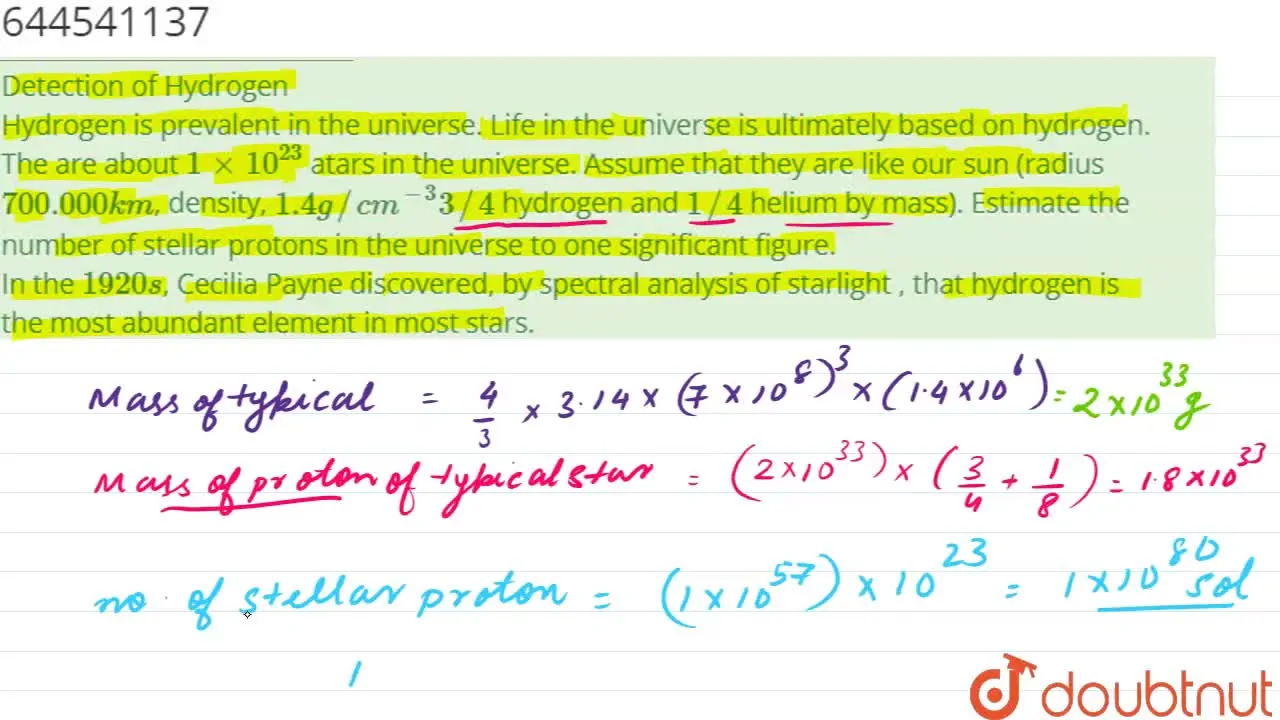Detection of Hydrogen
Hydrogen is prevalent in the universe. Life in the universe is ultimately based on hydrogen.
The are about 1×1023 atars in the universe. Assume that they are like our sun (radius 700.000km, density, 1.4g/cm−33/4 hydrogen and 1/4 helium by mass). Estimate the number of stellar protons in the universe to one significant figure.
In the 1920s, Cecilia Payne discovered, by spectral analysis of starlight , that hydrogen is the most abundant element in most stars.
The correct Answer is:Mass of a typical star =(4/3)×(3.1)×(7×108m)3×(1.4×106gm−3)=2×1033g
Mass of protons of typical star =(2×1033g)×(3/4+1/8)=1.8×1033g
Number of protons of a typical star =(1.8×1033g)×(6×1023g−1)=1×1057
Number of stellar protons in the universe =(1×1057)×(1023)=1×1080 Sol.
Step by step video & image solution for Detection of Hydrogen Hydrogen is prevalent in the universe. Life in the universe is ultimately based on hydrogen. The are about 1xx 10^(23) atars in the universe. Assume that they are like our sun (radius 700.000 km, density, 1.4 g//cm^(-3) 3//4 hydrogen and 1//4 helium by mass). Estimate the number of stellar protons in the universe to one significant figure. In the 1920s, Cecilia Payne discovered, by spectral analysis of starlight , that hydrogen is the most abundant element in most stars. by Chemistry experts to help you in doubts & scoring excellent marks in Class 12 exams.
Similar Questions
The universe is
View SolutionTotal number of stars present in universe is
View SolutionAbout 93% of all atoms in the universe are
View SolutionUniverse originated
View SolutionGive some facts about the universe.
View SolutionThe density of hydrogen at NTP is 8.9×10−5kg/litre . Find the universal gas constant.
View SolutionThe universe is about….. Billion year old
View SolutionNumber of galaxies found in Universe is
View SolutionUniverse is an example of
View SolutionMass of a typical star is 1.0×1030kg. Assume that a star is typically 3/4 hydrogen and 1/4 helium by mass. The estimated number of protons (which are present in H as well as He) in a typical star is approximately
View Solution


